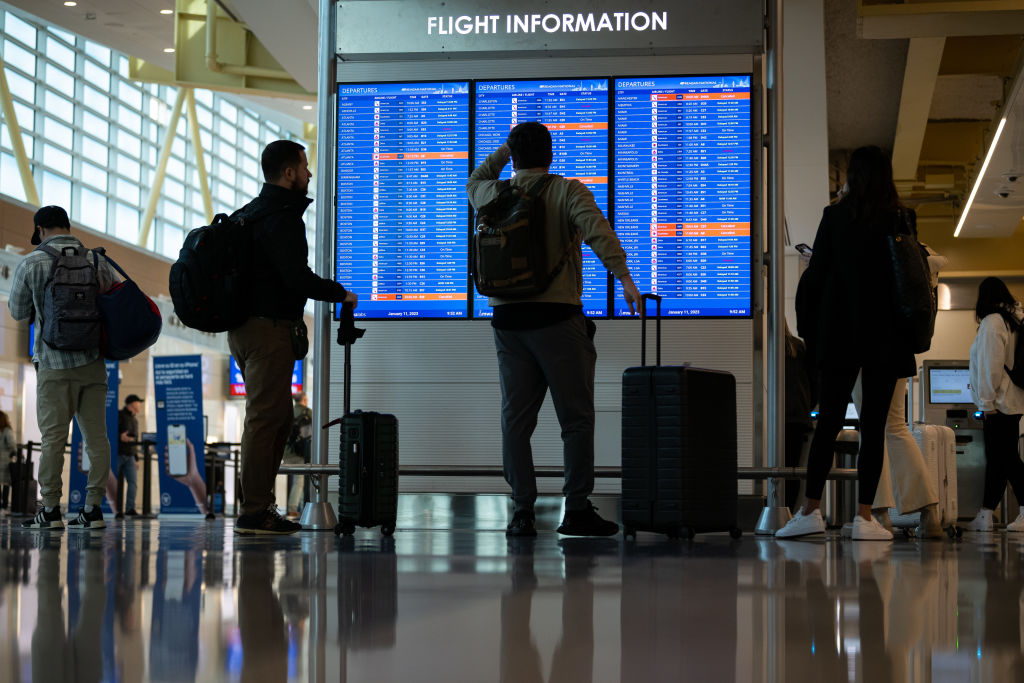The FAA (Federal Aviation Administration) held a rare safety summit on Wednesday, March 15, as near collisions ticked up to seven incidents just this year. It and several other organizations met to discuss the suspected causes, ranging from outdated equipment to post-pandemic issues, and how to ensure safe skies for passengers across the nation. The aviation outfit met with Congress just last month, but already there’s been another close call, which the acting head of the agency, Billy Nolen, addressed in his opening statement:
“When I called this gathering a few weeks ago, it was because we had seen an uptick in incidents across the aviation system. In the intervening time, we’ve experienced additional incidents, including events on runways, terminal area ramps — and even unruly passenger incidents that continue to defy logic.”
The behind-doors meeting was categorized much like a workshop, with stakeholders invited to hold “breakout groups” to discuss concerns and ideas to fix the ailing airlines. Secretary of Transportation Pete Buttigieg said the FAA needs to focus on finding the “root causes,” and that of particular concern is a growing number of mid-air close calls. The summit, held in McLean, Virginia, is the first since 2009; many say it is long overdue.
FAA Said Flying is Still Safest Way to Travel
“There is no question that aviation is amazingly safe,” Nolen told the attendees. “But vigilance can never take the day off.”
Captain Laura Einsetler suggested some of the incidents may be the result of post-pandemic efforts. “We’re now quickly hiring a lot of new people into the industry: air traffic control, maintenance pilots, everything. So it’s taking time to get everyone up to speed, and that’s some of what we’re seeing right now.”

(Photo by Graeme Sloan via Getty Images)
Rich Santa, the president of the National Air Traffic Controllers Association union, seemed to corroborate Einsetler’s claim, saying, “Unfortunately, we have a staffing issue right now, as air traffic controllers. We are 1,200 certified professional controllers less now than we were 10 years ago. It’s time for us to accurately and adequately staff the facilities.” Nolen informed the summit that the FAA is working toward hiring 1,500 controllers this year and another 1,800 in 2024.
The chairwoman of the National Transportation Safety Board (NTSB), Jennifer Homendy, blames the near-misses and problems on something else. According to her, the NTSB board has been making recommendations to improve safety that haven’t been addressed in years. “One is 23 years old and still appropriate today on technology and warning pilots of an impending collision,” she explained. “How many times are we going to have to issue the same recommendations over and over and over again?”
The safety agency’s chairwoman cited a common issue with six runway incidents they are currently investigating. In each of the cases, the black boxes (including the cockpit voice recorder) were overwritten so that investigators couldn’t hear what happened on the flight deck.
Recent Commercial Aviation Incidents
- On Dec. 18, 2022, a United Airlines Boeing 777 took off from Maui, rose to about 2,200 feet, then suddenly dove down and came within 775 feet of the Pacific Ocean.
- The FAA issued the first nationwide ground stop since last September on January 11 this year after its NOTAMs – the method to communicate alerts to pilots – failed.
- On January 13, a Delta Airlines plane almost had a collision with an American Airlines flight that seems to have been on the wrong runway at Kennedy International Airport. The Delta pilot had been forced to slam on the brakes to prevent a crash.
- While departing Seattle on January 26, the tails of two different Alaska Airlines Boeing 737s struck the ground during takeoff because of weight and balance issues. These two incidents happened only six minutes apart.
- In February, a FedEx Boeing 767 was making its final approach into Austin, Texas, and nearly collided with a Southwest Airlines Boeing 737 that had been cleared to take off on the same runway. The planes came within 100 feet of colliding.
- On March 7 at Reagan National Airport near Washington, DC, Republic Airways Flight 4736 didn’t have clearance when it crossed a runway. United Airlines Flight 2003 was using the same runway for takeoff and had been given clearance. The FAA said the pilot of the Republic flight had received approval but for a different runway and “turned on the wrong taxiway.”
The FAA has been accused of focusing on regulatory adherence rather than making substantive changes to its processes. Nolen highlighted this, asking, “In light of the recent close calls and the attention being focused on even routine go-arounds – are we emphasizing efficiency over safety?” This was the first in what is expected to be several safety summits to come.
Do you have an opinion about this article? We’d love to hear it! If you send your comments to [email protected], we might even publish your edited remarks in our new feature, LN Readers Speak Out. Remember to include the title of the article along with your name, city, and state.
Please respect our republishing guidelines. Republication permission does not equal site endorsement. Click here.

